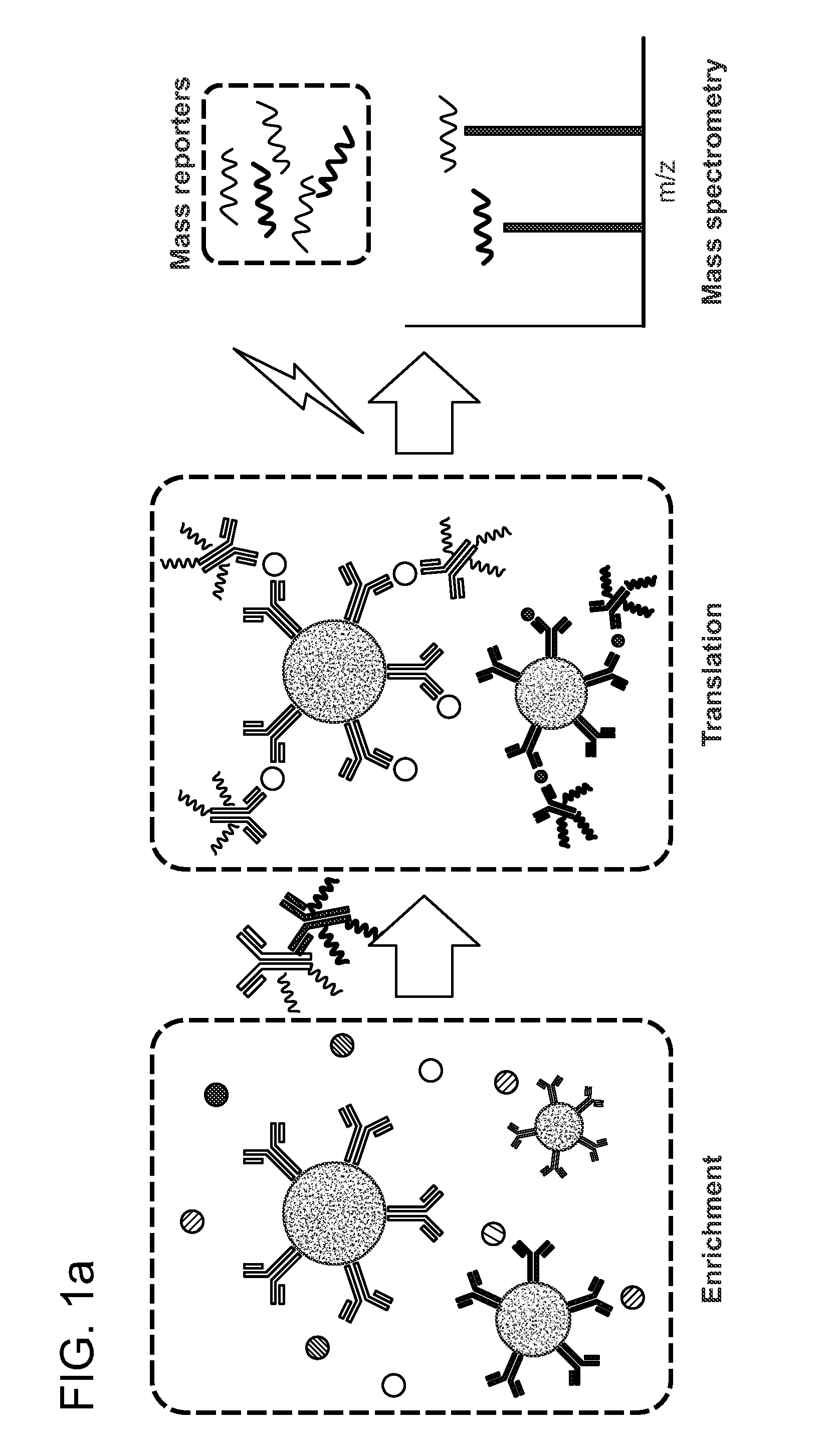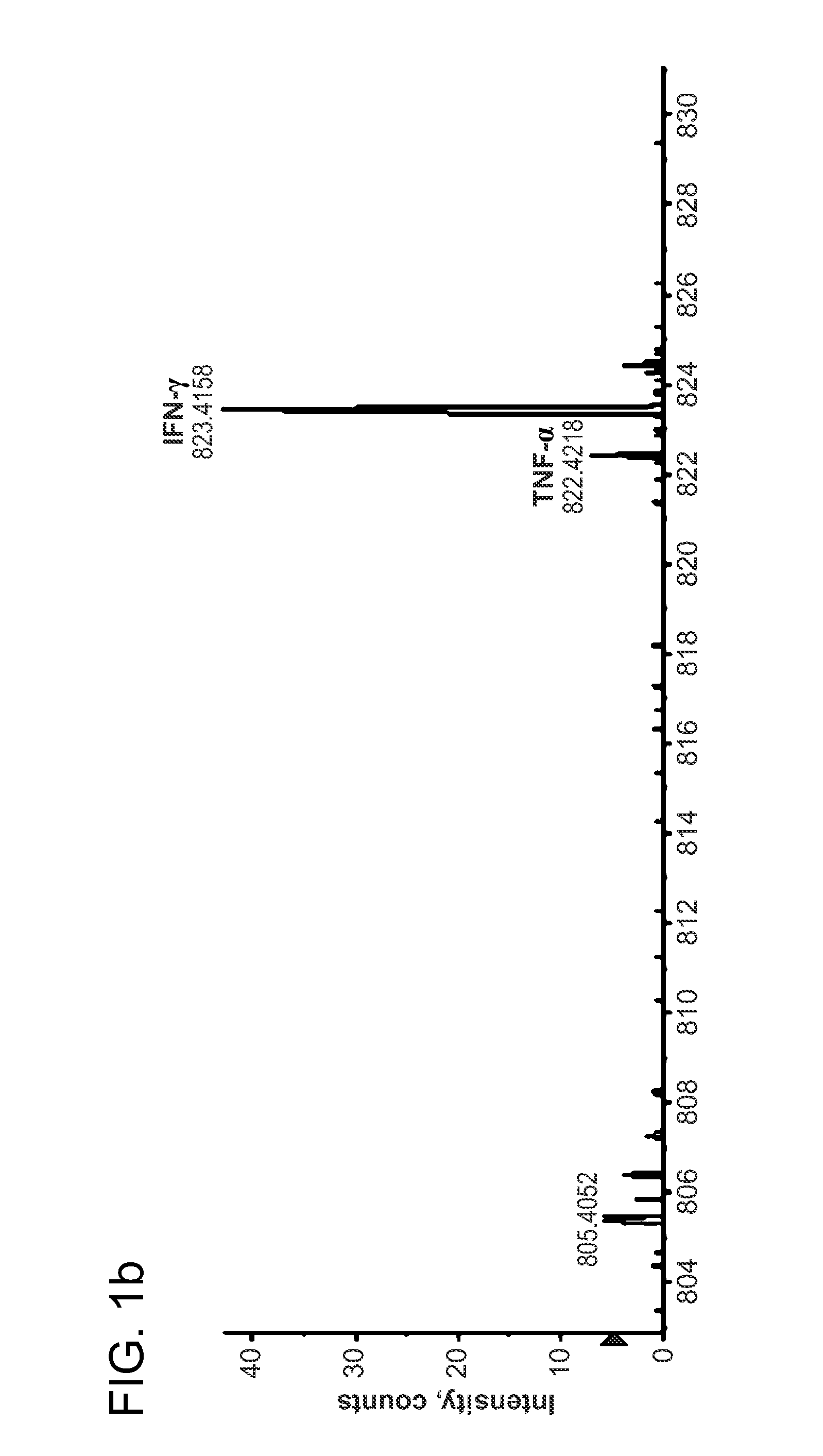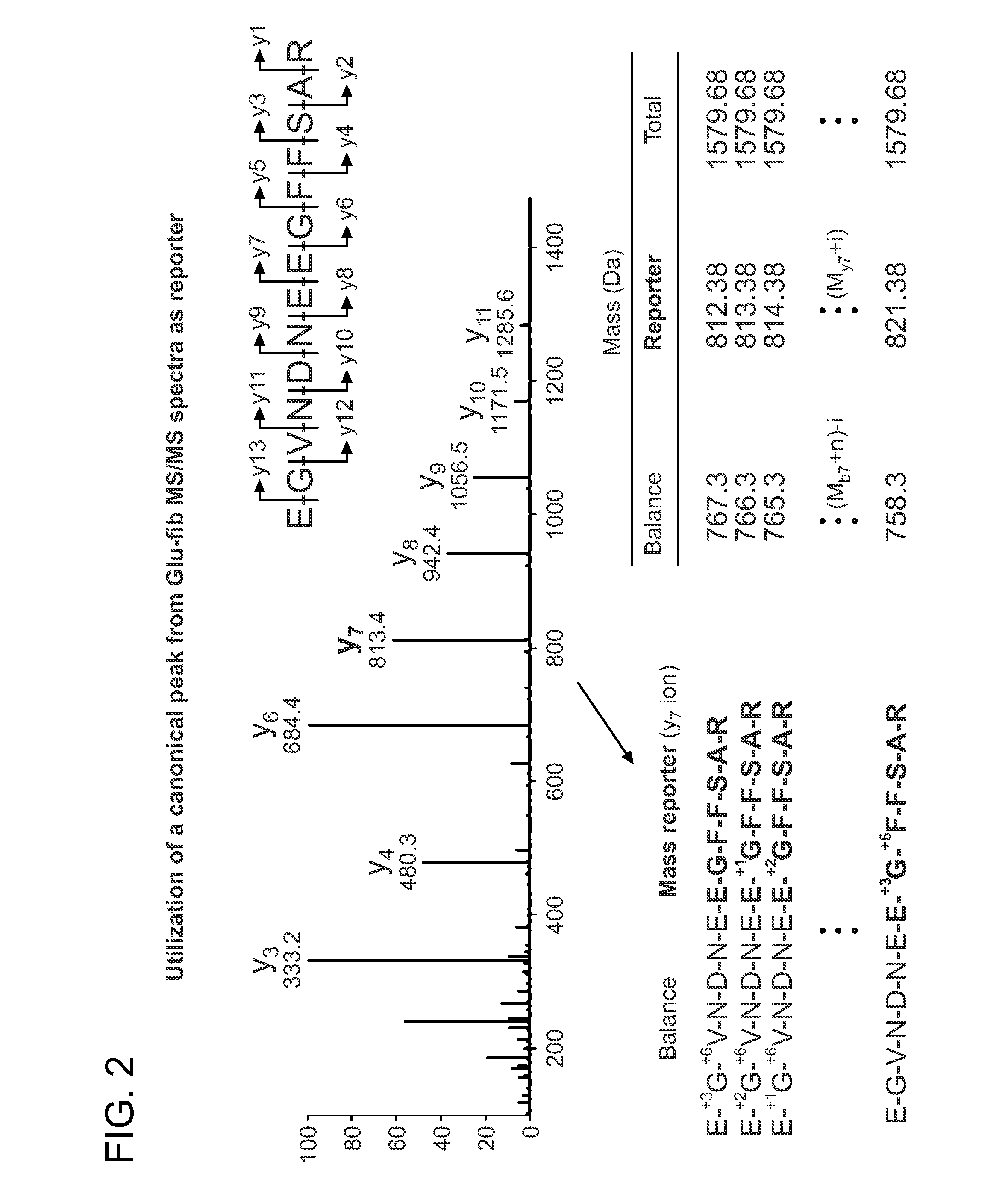Multiplexed detection with isotope-coded reporters
a reporter and complex detection technology, applied in the field of analytical techniques, can solve the problems of difficult and challenging detection of target analytes in complex samples, limiting the accuracy of simultaneous quantification of such different analytes in multiplex ms assays, and affecting the quality of the sampl
- Summary
- Abstract
- Description
- Claims
- Application Information
AI Technical Summary
Benefits of technology
Problems solved by technology
Method used
Image
Examples
example 1
Materials and Methods
[0141]Peptide and Ab-Peptide Synthesis.
[0142]All peptides were synthesized by Fmoc chemistry in house by the biopolymers facility at the Swanson Biotechnology Center (MIT). Isotope-labeled amino acids were purchased from Cambridge Isotopes. The photosensitive linker (3-Nα-Fmoc-Amino-3-(2-nitrophenyl)propionic acid) was purchased from Advanced Chemtech. Detection antibodies against human IFN-gamma and TNF-alpha (eBioscience, clones 4S.B3 and Mab11) were first reacted with SIA (Pierce) at a 50:1 mole ratio. Following removal of excess SIA, peptides were incubated with Abs at a 20:1 mole ratio. Excess peptides were removed by size filtration spin filters (30k mwco, Amicon).
[0143]Ab-Bead Synthesis.
[0144]Tosyl-activated magnetic beads (Myone, Invitrogen) were reacted with anti-human IFN-gamma and anti-human TNF-alpha (eBioscience, clones NIB42 and Mab1 respectively) according to manufacturer's instructions. Briefly, 1 mg of either antibody was buffered exchange into ...
example 2
Detection of TNF-Alpha and IFN-Gamma in a Liquid Sample
[0161]A liquid sample comprising of recombinant human IFN-gamma spiked into 10% bovine serum to simulate a complex biological sample was made. As shown in FIG. 1a, the sample was first deconvoluted by contacting the sample with antibodies conjugated to the surface of beads. Specific binding to anti-human-TNF-alpha and anti-human-IFN-gamma antibodies bound to the surface of the beads resulted in immobilization of the target analyte IFN-gamma on the bead surface. The beads were then separated from the liquid sample by a magnet to remove the liquid phase and any unbound materials comprised in any sample residue remaining on the beads were washed away from the beads by washing the beads with a wash buffer. The immobilized analytes bound to the binding agents on the bead surface were then contacted with another set of antibodies against TNF-a and IFN-g that were conjugated to a set of iCOREs via a photocleavable linker (dE-+3G-+6V-dN...
example 3
Utilization of a Canonical Peak from Glu-Fib MS / MS Spectra as a Reporter
[0163]Glu-fib was evaluated for its usefulness as a base sequence for the generation of an isobaric iCORE library. Glu-fib is a 13 amino acid peptide of the sequence EGVNDNEEGFFSAR (SEQ ID NO: 1). The fragmentation spectrum resulting from collision induced disassociation results in the generation of y-type ions. FIG. 2 is a typical spectrum to illustrate the resulting y-type ions (y1-y13) and their relative intensities.
[0164]The propensity of glu-fib to fragment along certain peptide bonds was exploited to construct 10 mass codes centered on the y7 ‘reporter’ ion (EGFFSAR (SEQ ID NO: 6)) by enriching the truncated sequence with heavy amino acids to produce variants differentiated by 1 Da each. This introduced mass shift is then compensated by isotope enrichment within the ‘balance’ fragment (EGVNDNE (SEQ ID NO: 7)). As a result, each peptide is characterized by an identical nominal mass and a distinct y7 fragmen...
PUM
| Property | Measurement | Unit |
|---|---|---|
| size | aaaaa | aaaaa |
| pH | aaaaa | aaaaa |
| temperature | aaaaa | aaaaa |
Abstract
Description
Claims
Application Information
 Login to View More
Login to View More - R&D
- Intellectual Property
- Life Sciences
- Materials
- Tech Scout
- Unparalleled Data Quality
- Higher Quality Content
- 60% Fewer Hallucinations
Browse by: Latest US Patents, China's latest patents, Technical Efficacy Thesaurus, Application Domain, Technology Topic, Popular Technical Reports.
© 2025 PatSnap. All rights reserved.Legal|Privacy policy|Modern Slavery Act Transparency Statement|Sitemap|About US| Contact US: help@patsnap.com



